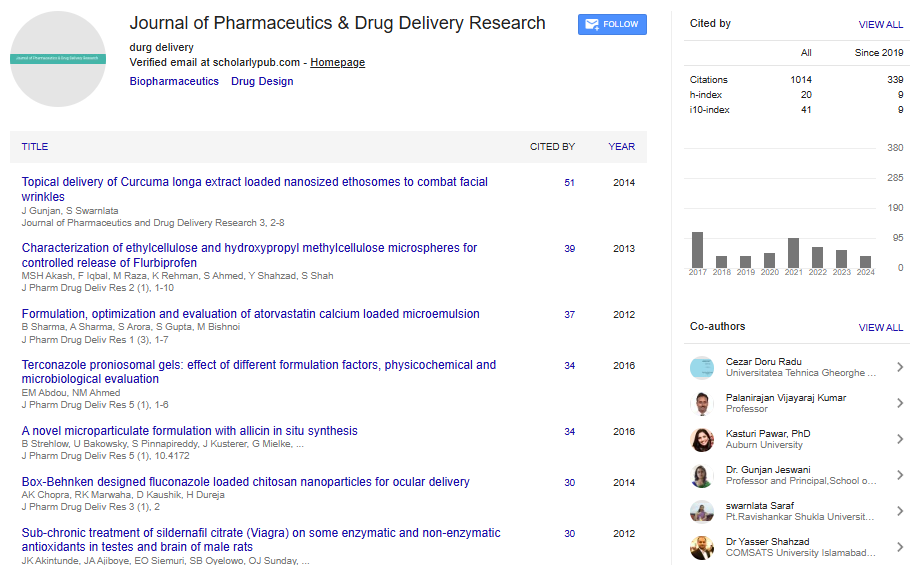Fabrication, characteristics, and future-biomedicine applications of villous oxalates
Chen Hsu
Lungwha University, Taiwan
: J Pharm Drug Deliv Res
Abstract
Statement of the Problem: Villous zinc oxalate (ZnC2O4) is a kind of phase-refined material. It can be prepared using various methods such as solid-phase, liquid-phase, or sol-gel methods. Zinc acetate (C4H6O4Zn) and oxalic acid are commonly used to prepare ZnC2O4. ZnC2O4 can be prepared by the sol-gel method from zinc oxide and graphene. In reverse, ZnC2O4 can be used to prepare ZnO for cancer therapy. However, the use of ZnC2O4 on human body is not clear for the time being. The reason behind this could be, ZnC2O4 belongs to paramagnetic materials and cannot be used on biomedicine. Villous ZnC2O4 was successfully prepared from reduced graphene oxide (RGO) and zinc oxide (ZnO) using a two-precursor sol-gel method, and scanned using a matrix-dotted microbeam laser. Application of the laser caused the synthesized ZnC2O4 to melt and resolidify, forming uniformly spread nanovillous protrusions. The characteristics of the microstructures were examined using X-ray diffraction, energy dispersive X-ray analysis, field emission scanning electron microscopy, and Raman spectroscopy. Villous ZnC2O4 is an open structure and can dissolve in liquid. Moreover, it can be attracted through impurity sites, resulting in oversaturation. There, it can be used on biomedicine applications, such as; it can be a surface coating material on superparamagnetic nanoparticles as targeted medicine. It can also be used as a targeted substrate for other medicinal coatings or interstitial in there. This targeted goal can be achieved by the novel drug delivery system for non-superparamagnetic nanoparticles and it is under development in our group.
Biography
Chen Hsu, DPhil, is currently a Professor in the Department of Chemical and Materials Engineering. He is an Editor of Nanomedicine & Nanotechnology Open Access, Editorial member of SCIRES Journal of Materials, Head of the Semiconductor and Ceramic Material Laboratory, Member of Chinese Material Science Association, Member of ROC Micro Systems and Nanotechnology Association, Member of Chinese National Defense Science and Technology Association, and Member of ROC Ministry of Economic Affairs. He received his DPhil degree from Oxford University in Materials in 1999. Currently, his research partially focuses on biosensors, nanomedicines, and novel drug delivery systems without using superpararmagnetic nanoparticles with a special research interest on microstructures to applications.
Email: chenhsuemail@yahoo.com.tw
 Spanish
Spanish  Chinese
Chinese  Russian
Russian  German
German  French
French  Japanese
Japanese  Portuguese
Portuguese  Hindi
Hindi 
